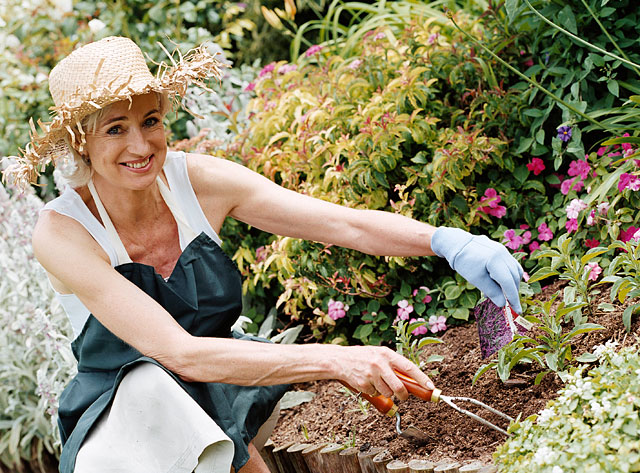Nicer weather is finally (mostly) here, and I know for many folks that means it is time to get out in the garden.
Whether you grow flowers, veggies, or mostly just weeds, gardening is a great way to get outside and boost both your physical and mental well-being.
Over the last couple of weeks, I have had several conversations with patients that had their knee replaced over the winter and are ready to get back to gardening, but are just unsure how it’s going to work.
To put things into perspective, I created a general time line of what to expect following a knee replacement. Keep in mind, some people will move faster or slower through these stages.
Stage 1
The first three months following a total knee is considered the protection and rehabilitation phase. During this time period, it is important to work diligently to regain full motion with both bending and straightening the knee.
This is also the time for progressive rebuilding of strength, walking ability, and balance retraining.
Stage 2
Next is the return to recreation phase which typically occurs 3 and 6 months following the knee replacement. This is the phase where you are starting to feel like yourself again and get to return to the things you love — like gardening.
During this time, it is important to remember your endurance still needs some work but tasks will get easier the more you do them.
Stage 3
By this point, most people are back to at least 80 percent of what they were able to do before their knee started really affecting them. That last 20 percent will come over the next 6-18 months and will come with progressively increasing activity levels.
My mom always told me to work smarter not harder, so I’ve come to appreciate making life easier on yourself if you can.
In lieu of that advice, these next few suggestions are tools or recommendations that may make gardening easier on you.
— First and foremost, choose garden tools with a long handle and a rubber grip. This will limit how much bending or squatting you have to do and make hanging on to the tool much easier.
— Use a bucket or stool when you do need to get down to the ground, so you don’t have to squat down so far. Getting up will also be much easier. Getting up from those lower positions, the first year out from a knee replacement, can prove to be a good challenge, but will get better as you get stronger.
— Use good body mechanics. If you have a heavy load, carry it close to your body. If there is a very repetitive task you have to do, such as weeding multiple flower beds, then make sure to break it up among several days and don’t try to do it all at once.
If this is your first summer back in the garden after a new knee, or another joint surgery, take it slow but enjoy putting that new body part to good use.
If you find you still can’t get up and down from the ground or don’t have the strength complete activities as you did before, consulting with a physical therapist may be a good next step to take.
Andrea Ancel is a Physical Therapist at Northern Michigan Sports Medicine Center in Petoskey and Harbor Springs. She can be reached via e-mail at aancel@nmsportsmed.com. This information is not to be considered medical advice and is not intended to replace consultation with a qualified medical professional.








